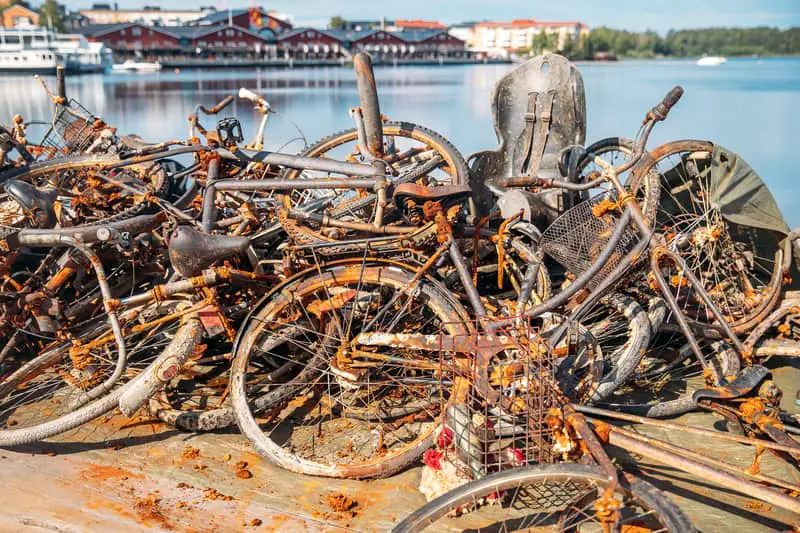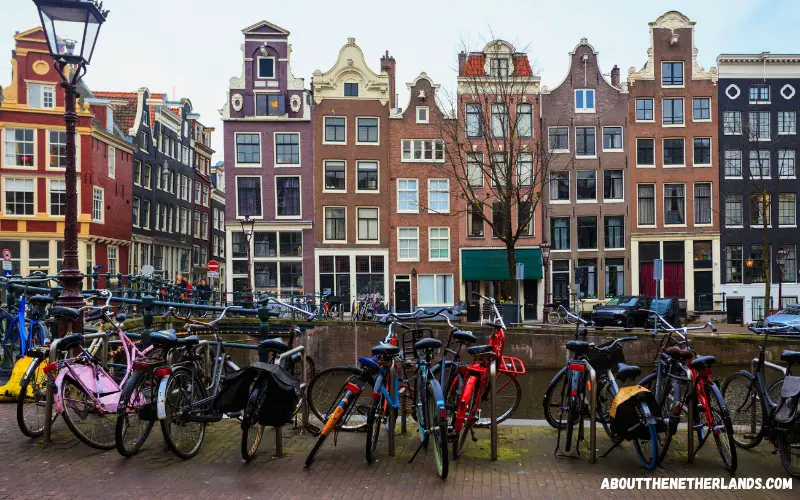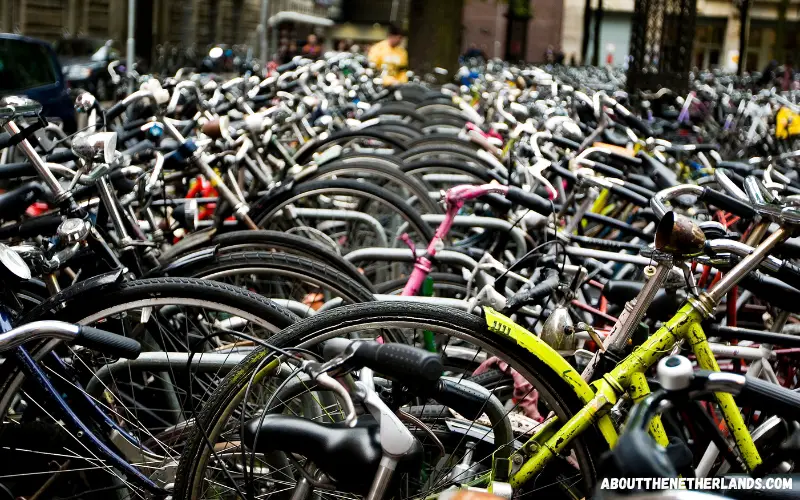

Amsterdam, the city famous for its picturesque canals, is also well-known for being the bicycle capital of Europe. With a staggering number of bicycles outnumbering residents, cycling holds a special place in the city's heart. But did you also know that many of these bicycles end up in the city's canals yearly?
With over 165 canals and a combined length of 100 kilometers (60 miles), the city's waterways offer numerous opportunities for its beloved bicycles to take an unfortunate plunge. From accidental mishaps to deliberate acts, thousands of bicycles find their way to the bottom of these canals each year.

But how many bikes end up in the canals in Amsterdam?
Approximately 15,000 bicycles are removed from Amsterdam's canals annually, a surprising reality for a city that cherishes its cycling culture. This figure gives us an insight into the intriguing relationship between bicycles and Amsterdam's charming waterways.
So, next time you traverse the city's famous canals, take a moment to appreciate the thousands of bicycles hidden beneath their picturesque surface.

Amsterdam is renowned for its cycling culture, holding a reputation as one of the most bicycle-friendly cities in the world. The widespread use of bikes in the city stems from its flat terrain, the extensive network of bicycle lanes, and its commitment to sustainable transportation.
The city's residents rely heavily on bikes for daily commutes, errands, and leisure activities, resulting in a large number of bicycles in circulation. Unfortunately, this also leads to the issue of bikes ending up in Amsterdam's canals.
According to Amsterdam's official water services, around 15,000 bikes are salvaged from the canals annually. The reasons for this phenomenon range from accidents and theft to vandalism.
Amsterdam's municipal government prioritizes maintaining the cleanliness of the canals and ensuring that cycling remains a safe mode of transportation for all.
As a result, they have implemented strategies to mitigate the number of bikes ending up in the water. Such strategies include increased signage, additional bike parking facilities, and recovery efforts for bikes in the canals.
In this section, we will explore some of the main reasons why bicycles end up in the canals of Amsterdam.
One of the primary reasons that bikes end up in the canals is due to accidents and vandalism.
Amsterdam has a high bicycle volume, which can sometimes lead to accidents near the water's edge. Inadvertently losing control or misjudging a turn can cause cyclists to unintentionally end up in the canal with their bike.
It is important to note that bike accidents are still a relatively rare occurrence in the Dutch capital.
Another explanation is vandalism. Unfortunately, some individuals intentionally throw bikes into the canals as a form of destructive behavior or simply as a prank.
This criminal act not only has negative ecological consequences but also puts pressure on the city's resources to recover these bikes from the waterways.
Amsterdam, as a city, is famous for its high bike density, which can result in an accumulation of abandoned bikes. Some people leave their bicycles locked to a nearby railing or fence, only to forget about them or not use them anymore.

In certain cases, bikes are left as waste from bike-sharing programs or bikes that have been poorly maintained and are no longer functional. These abandoned bikes often take up valuable space along the canal sidewalks, making it harder for pedestrians and cyclists to move around the city.
As a result, some of these abandoned bikes might end up in the canals either accidentally or through acts of frustration by the city residents.
The combination of these factors has led to the ongoing issue of many bikes being found in the canals of Amsterdam. The city has been proactive in addressing this problem, with thousands of bikes being recovered from its waterways each year.
Every year, between 12,000 and 15,000 bicycles are recovered from the canals of Amsterdam, Netherlands. The city's water authorities work to retrieve bikes that accidentally or intentionally end up in the waterways.
The process involves using specialized boats equipped with cranes and grappling hooks to lift the bikes out of the canals.
Once a bicycle has been located, the grappling hooks are carefully lowered into the water, guided by skilled workers who ensure that minimal damage is done to the canal infrastructure during the retrieval process.
After a bike has been successfully hooked, it is lifted out of the water and placed onto the boat for transportation to a processing facility.
Retrieving bikes from the canals plays an essential role in preserving the environmental health of Amsterdam's waterways. Removing abandoned bicycles helps to minimize the amount of debris and pollution in the canals, improving water quality and the overall health of aquatic ecosystems.
(Click here to find out how clean the Amsterdam canals are)
At the processing facility, bikes that are in salvageable condition may be repaired and returned to the cycling community, while those that are beyond repair are often recycled, reducing waste and environmental impact.
This ensures that valuable resources are put back into circulation and further contributes to Amsterdam's commitment to sustainability.
One measure includes creating extra space for cyclists away from bridges, by repurposing car parking spots for more bike stands by the canals.
Additionally, the city is actively working to remove bikes from the canals, with about 15,000 bikes being pulled out each year.
Raising public awareness about the importance of proper bike storage and protection is vital to preventing bikes from ending up in the canals.
Encouraging locals to lock their bikes securely to sturdy objects can deter potential vandals from throwing bikes into the water.
Moreover, residents can help protect their city's unique landscape by reporting abandoned bikes and participating in local bike cleanup initiatives.
These combined efforts from the city and the public can significantly contribute to preserving Amsterdam's picturesque canals and reducing the number of bikes that end up submerged each year.
Amsterdam is a city of bicycles, but the canals represent an unfortunate final destination for many of them. It has been estimated that there could be more bikes in Amsterdam's canals than there are bicycles in the city, illustrating the issue of discarded and abandoned bikes.
The reasons for this phenomenon can be attributed to factors such as theft, vandalism, and accidents, with some of these bikes remaining underwater for an extended period before removal.
Various efforts have been made to tackle the problem of bicycles in the canals. City authorities carry out regular cleanup operations to remove thousands of bikes each year, and these initiatives seem to be making an impact on the number of bikes retrieved.
However, the following factors can still be improved:
By addressing these issues and raising awareness, both Amsterdam's citizens and visitors can contribute to a cleaner and more sustainable biking environment, reducing the number of bicycles destined for the canals and preserving Amsterdam's iconic waterways for future generations to enjoy.
Would you like to learn more about the Amsterdam canals? Then make sure to check my article with facts about the Amsterdam canals!